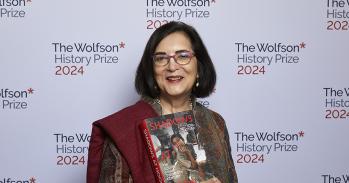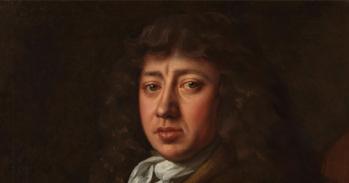
In the third report of our Egg Cetera series on egg-related research, Dr Joe Moshenska delves into Sir Kenelm Digby’s fantastical and exotic 17th-century recipes and finds an early champion of cooking by science.
In the third report of our Egg Cetera series on egg-related research, Dr Joe Moshenska delves into Sir Kenelm Digby’s fantastical and exotic 17th-century recipes and finds an early champion of cooking by science.
Simply by beating eggs with sugar and mixing it into tea, Digby was not merely making a concoction capable of purifying and invigorating the body, he was encouraging his readers to put familiar ingredients to exotic use, using a method brought from an unimaginably distant land.
Chinese food, it seems, arrived in England in the 1660s, but not in the form that we might expect. In his book of recipes, published posthumously in 1669, Sir Kenelm Digby (1603–65) includes an account of ‘The Jesuite that came from China’ who reported the Chinese custom of preparing tea in the following fashion: ‘take two yolks of new laid eggs, and beat them very well with as much fine sugar… when they are very well incorporated, pour your Tea upon the Eggs and Sugar, and stir them well together. So drink it hot.’ Great effects were attributed to this simple recipe: ‘This presently discusseth and satisfieth all rawness and indigence of the stomack, flyeth suddainly over the whole body and into the veins… and preserves one a good while from necessity of eating.’
Everything about this recipe is a fascinating combination of the familiar and the strange, and my new research is focusing on Digby precisely because his entire life is a mixture of just this sort. In some ways, he seems to point towards the modern age: a founding member of the Royal Society, he mixed with Thomas Hobbes and René Descartes in Paris, and produced pioneering scientific works. In other respects, he seems like a character who has waltzed straight out of a romance: extravagant in every imaginable regard, Digby sailed to Turkey in his mid-twenties, engaging in sea battles and freeing captive slaves from Algiers; he fought a duel defending Charles I’s honour, and scandalously married a woman, Venetia Stanley, who may have been another nobleman’s mistress.
I am inspired to research Digby’s life and work in order to make sense of this curious intermingling of the recognisable and the fantastical that he embodies. This mixture, present in every aspect of his life and work, is encapsulated in this Chinese recipe. Simply by beating eggs with sugar and mixing it into tea, Digby was not merely making a concoction capable of purifying and invigorating the body, he was encouraging his readers to put familiar ingredients to exotic use, using a method brought from an unimaginably distant land.
Eggs, the most everyday ingredients, are used in various ways throughout The Closet of Sir Kenelm Digby Opened, sometimes in quantities that seem nauseatingly excessive, especially when mixed with lavish amounts of cream and sugar. This helps to explain why so many people in this period suffered from obesity, gout and kidney stones. One recipe for a cake, for example, begins: ‘take thirty Eggs, fifteen whites, beat them well… Then take a pint and a half of Cream or something more, and set it on the fire, and put into it four pounds and three quarters of Butter.’ Don’t try this at home. Eggs are unique among the ingredients in Digby’s book because they also serve as utensils or measuring devices. His standard way of gauging the thickness of a sauce or liquid is to see if an egg will float in it: when making mead, you must add honey to water and ‘let it boil till it bear an Egg’.
If Digby’s recipes capture the everydayness and versatility of eggs, his scientific pursuits remind us that an egg, while a routine element of cookery, also contains within it the mysteries of life. In his major philosophical work, the Two Treatises on the nature of body and soul, Digby built upon the pioneering discussion of generation by William Harvey, and gave a new account of the nature of fertilised eggs. He detailed how it was possible to trace the incremental development of life from its earliest flickerings: ‘you may lay severall egges to hatch; and by breaking them at severall ages you may distinctly observe every hourely mutation in them, if you please.’ His recipe from China made it possible to use eggs in an invigoratingly exotic fashion; the same everyday objects, incubated and carefully scrutinised, might lay bare the very foundations of all life and growth.
Dr Joe Moshenska
Joe Moshenska is a fellow and lecturer in English at Trinity College. He is currently completing his first book, entitled Feeling Pleasures: The Sense of Touch in the English Renaissance, and has ongoing research interests in various areas of 16th- and 17th-century poetry, science and religion. His work on Sir Kenelm Digby will be supported next year by an Early Career Fellowship from the Centre for Research in the Arts, Social Sciences and Humanities (CRASSH).
This work is licensed under a Creative Commons Licence. If you use this content on your site please link back to this page.





